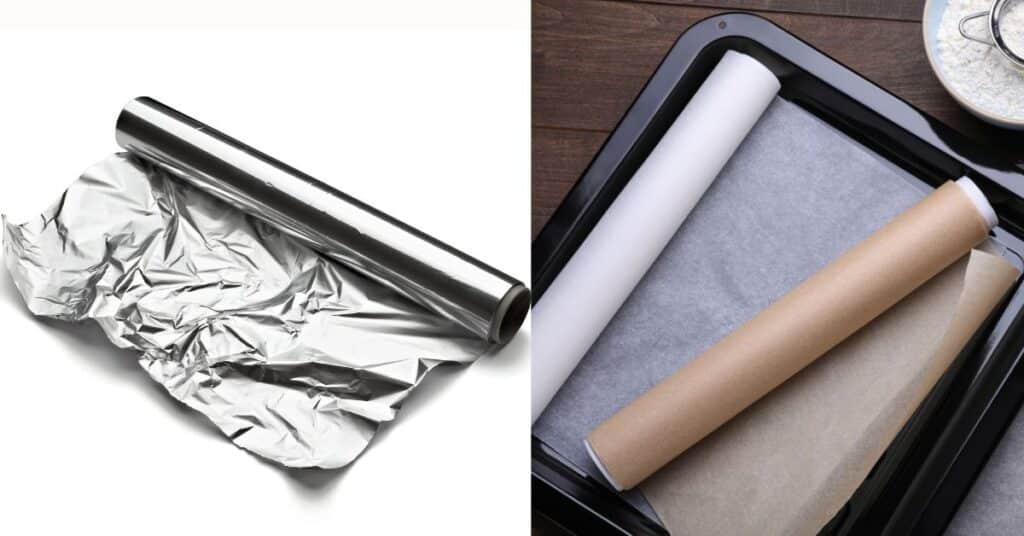
When you’re in the kitchen ready to bake a batch of cookies, the decision of whether to use aluminum foil or parchment paper can be more influential than you might think. Each has its own set of advantages that can affect the outcome of your cookies, from texture to browning to ease of cleanup. Understanding the distinct properties of aluminum foil and parchment paper will help you choose which is the best lining for your baking sheets.
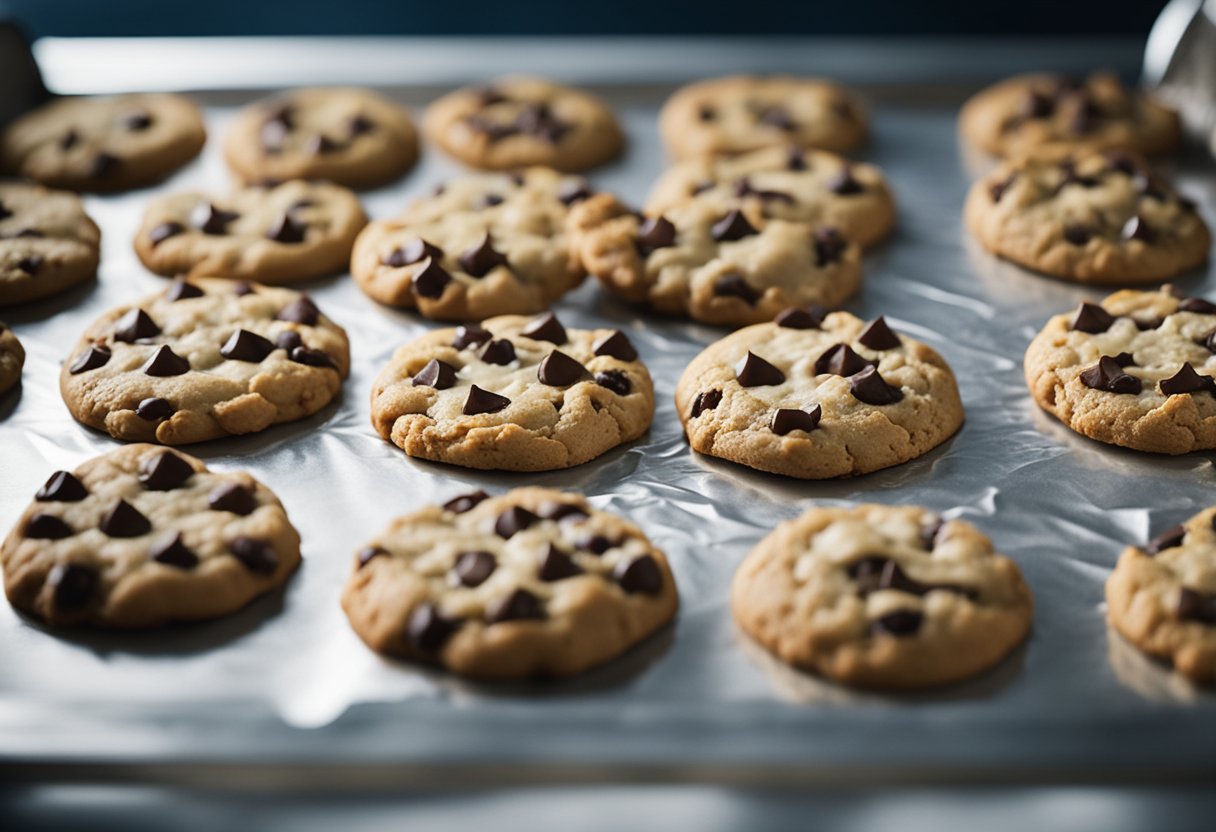
Aluminum foil conducts heat more efficiently, which means using it can result in cookies with a crisper bottom. This can be especially desirable if you enjoy a crunchier texture. However, because it can cause faster browning, it’s important to keep an eye on your cookies to prevent them from burning. On the other hand, parchment paper provides a non-stick surface that ensures your cookies slide off the tray with ease, and it can lead to more even cooking due to its heat-resistant and insulating qualities.
Choosing the right lining for your cookie baking doesn’t only impact cooking results but also affects your kitchen routine. Aluminum foil, for instance, can be molded to fit different shapes and can hold up against heavier dough, but it isn’t inherently non-stick and may require greasing. Parchment paper, conversely, might not be as sturdy as foil, but its non-stick quality reduces the need for additional fats like butter or oil, making cleanup a breeze. Next time you’re faced with this choice, consider not just the cookie you crave, but also the baking experience you prefer.
Materials Overview
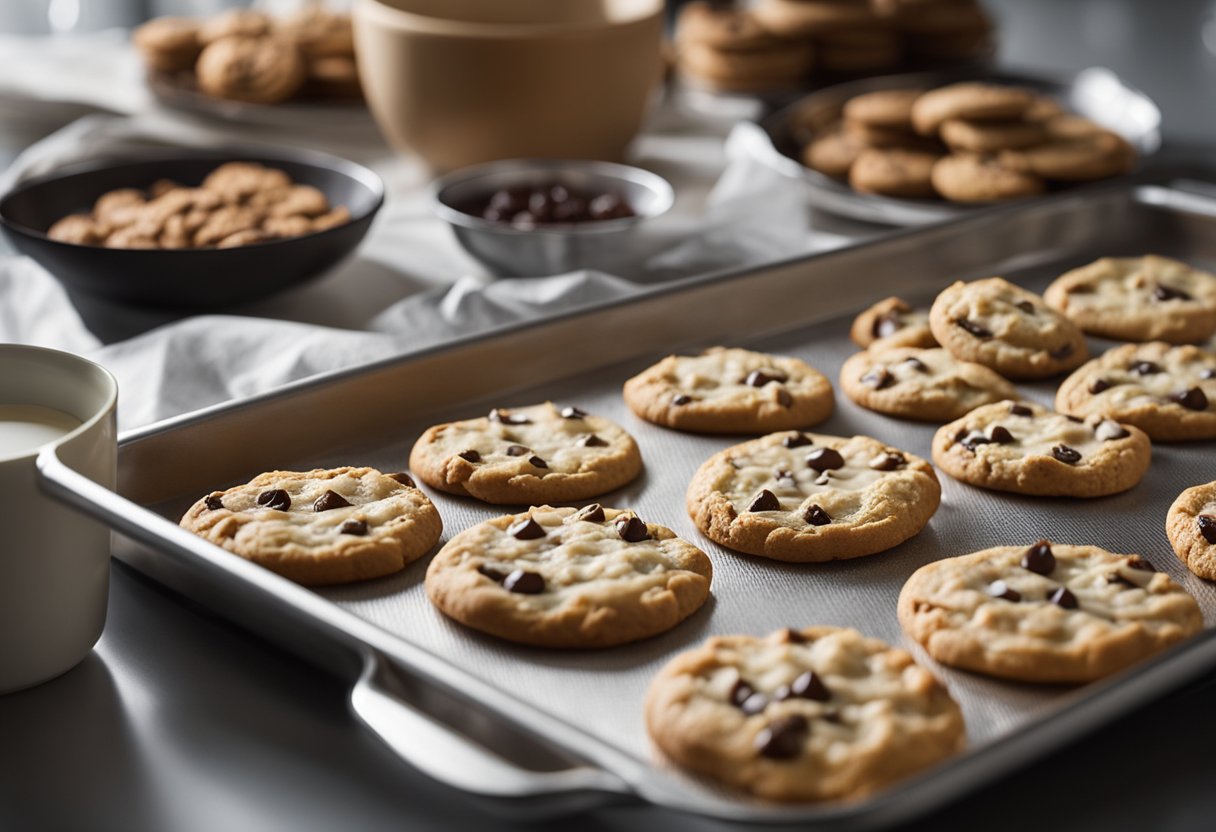
When it comes to baking cookies, you have two popular choices for lining your baking sheets: parchment paper and aluminum foil. Each has unique properties that can affect your baking result, so knowing when to use which material is key to achieving perfect cookies every time.
What Is Parchment Paper?
Parchment paper is a heat-resistant, non-stick paper that’s used in baking and cooking. It’s made by running sheets of paper pulp through a bath of sulfuric acid or zinc chloride, which partly dissolves or gelatinizes the paper. This treatment forms a sulfurized cross-linked material, with high density, stability, and heat resistance, as well as a surface ideal for baking.
- Nonstick: Your cookies will slide off without sticking.
- Heat-resistant: It can withstand oven temperatures, typically up to around 420°F (215°C).
- Microwave safe: Unlike aluminum foil, you can use parchment paper in the microwave.
- Alternative to waxed paper: Parchment paper is often preferred over waxed paper since it doesn’t have a coating of paraffin wax, which can melt and transfer to your food under heat.
- Substitutes: In the absence of parchment paper, silicone baking mats are a reusable alternative.
What Is Aluminum Foil?
Aluminum foil is a thin sheet of aluminum that’s often used in the kitchen for wrapping, covering, and lining pans. Unlike parchment paper, aluminum foil conducts heat, making it valuable for certain applications but potentially causing uneven baking for delicate items like cookies.
- Versatile Kitchen Tool: Useful for more than just lining baking sheets, it can help with covering dishes and storing leftovers.
- Cleanup: Foil can make cleanup easier; you simply remove it after baking and your baking sheet remains clean.
- Oven and Freezer Friendly: It’s heat and cold resistant and can go from oven to freezer without issue.
- Foil Properties: Foil is not inherently nonstick, and without preparation, cookies may stick.
- Eco-friendly: Aluminum foil can be recycled if cleaned properly, but not all recycling centers accept foil with food residue.
By choosing the right material for the job, you’ll not only enjoy the baking process but also likely be more pleased with the end result. Whether your priority is an easy cleanup, being eco-friendly, or ensuring a non-stick surface, there’s a suitable option for you.
Baking Cookies with Parchment Paper vs. Aluminum Foil
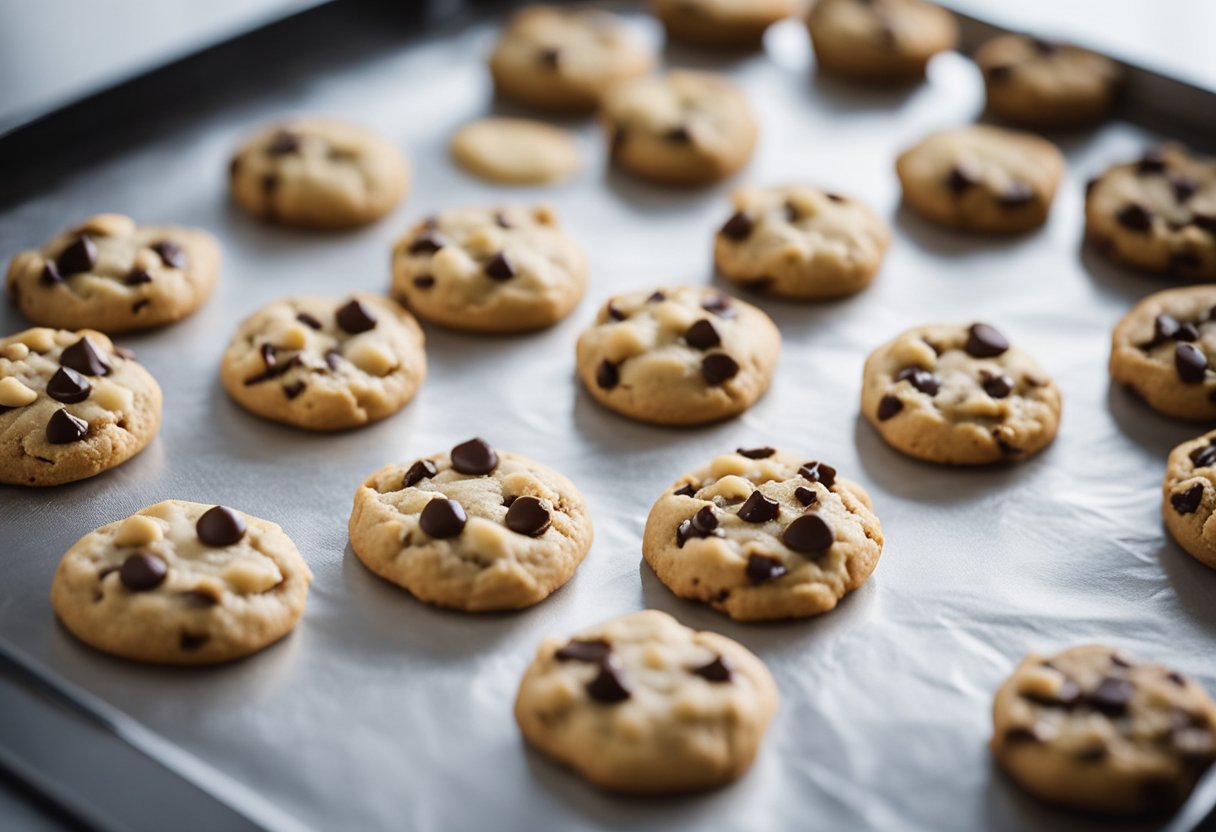
When baking cookies, the choice between parchment paper and aluminum foil can influence your cookies’ texture, color, and baking efficiency. Here’s how each option might affect the outcome of your batch.
Texture and Taste of Cookies
Using parchment paper, your cookies can turn out more evenly baked with a consistent texture. Parchment’s non-stick surface means your cookies slide off without crumbling, maintaining their integrity. Chocolate chip cookies tend to emerge with a chewy interior. Conversely, aluminum foil often leads to a crisper bottom, affecting the overall texture. Since foil conducts heat more directly, the taste may also marginally differ with a slightly more toasted flavor.
Cookie Spread and Color
Cookies baked on parchment paper are less likely to spread too much due to its heat resistance, keeping that classic chocolate chip cookie shape. Expect a golden brown finish without dark edges. On the other hand, aluminum foil could cause unpredictable spreading, leading to thinner cookies. The higher heat conductivity can result in a darker color, especially along the edges, which may be a plus if you prefer a crispier texture.
Cookie Baking Temperature Considerations
When using parchment paper in the oven, it’s usually safe up to 420-450°F, perfect for most cookie recipes. It’s reliable for consistent baking temperatures and can be used in an air fryer. Aluminum foil can tolerate higher temperatures, allowing for versatility, but it’s imperative to monitor your cookies to avoid burning. Adjustments in temperature might be necessary, as foil can change the way heat is distributed, influencing your baking outcome.
Beyond Baking Cookies: Other Uses in the Kitchen
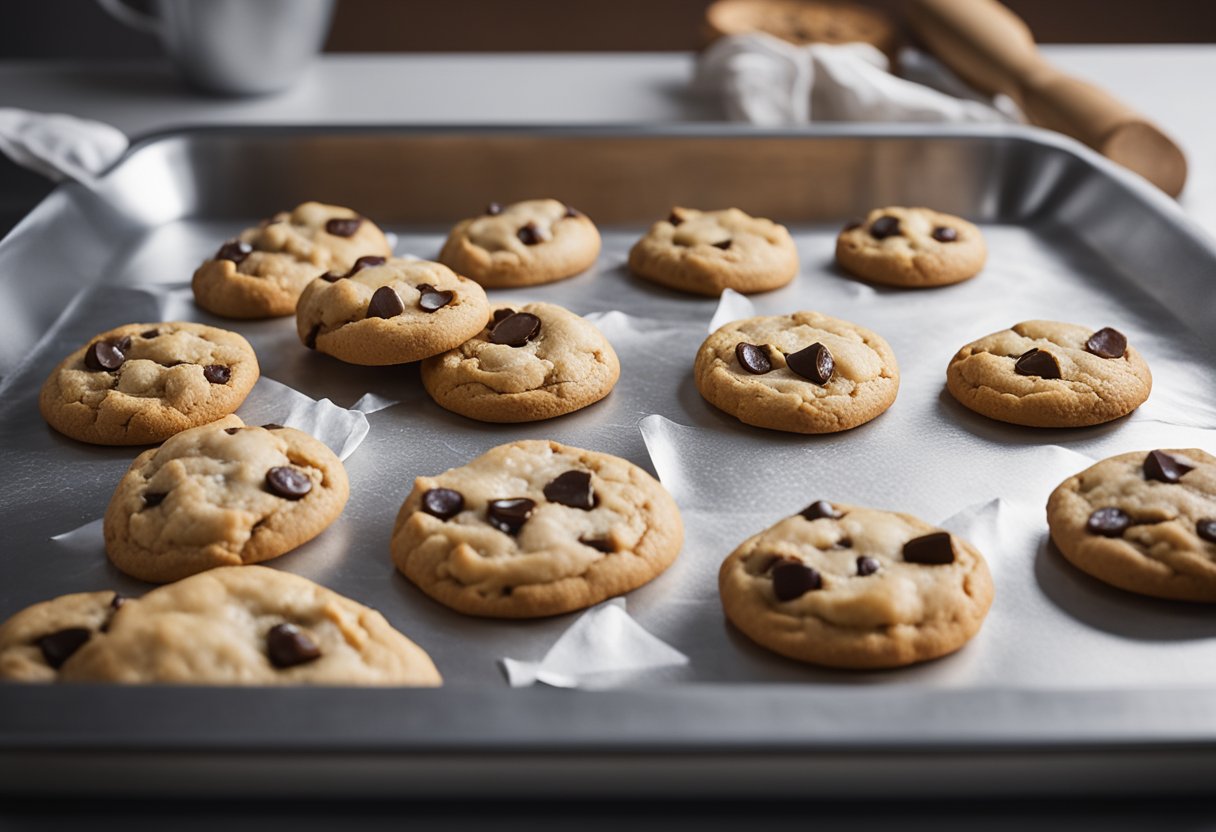
When you’re not baking cookies, both aluminum foil and parchment paper have versatile roles in the kitchen. From ensuring your roasted chicken gets that perfect golden-brown skin to keeping your sandwiches fresh for lunch, discover how these everyday items can make kitchen tasks simpler and tidier.
Roasting and Grilling
Aluminum Foil:
- Roasting: Use foil to wrap vegetables like potatoes or carrots with herbs and a bit of oil to lock in moisture and flavor.
- Grilling: Form foil packets with fish, garlic, and tomatoes to infuse flavors and create an easy cleanup option.
Parchment Paper:
- Baking: On baking sheets, parchment can be used for roasted vegetables, preventing them from sticking without adding extra fat.
- En Papillote: A technique where you place chicken or fish with a medley of vegetables and herbs in a parchment paper packet and bake, allowing the food to steam and stay moist.
Wrapping and Storage
Aluminum Foil:
- Wrapping: Ideal for wrapping sandwiches, rolls, and even slices of cake to keep the air out and maintain freshness.
- Freezer Storage: Foil can protect food against freezer burn, wrapping items tightly to keep them fresh for longer.
Parchment Paper:
- Layering: Separate items like burger patties, candy, or cookies before freezing. Parchment keeps things from sticking together.
- Covering: Use parchment to cover dishes when storing in the fridge to prevent drying out or becoming soggy.
Specialty Foods and Techniques
Aluminum Foil:
- Candy Making: Foil can be used as a surface when pouring out hot candy for cooling, offering an easy cleanup.
- Pie Crusts: Wrapping the edges of pie crusts with foil prevents over-browning while the rest of the pie cooks evenly.
Parchment Paper:
- Baking Sheets: Line sheets with parchment for non-stick baking of delicate items like French macarons or meringue.
- Silicone Mat Alternative: Use parchment as a substitute for a silicone mat when non-stick surfaces are needed, especially for candy or baking delicate pastries.
Health and Environmental Considerations
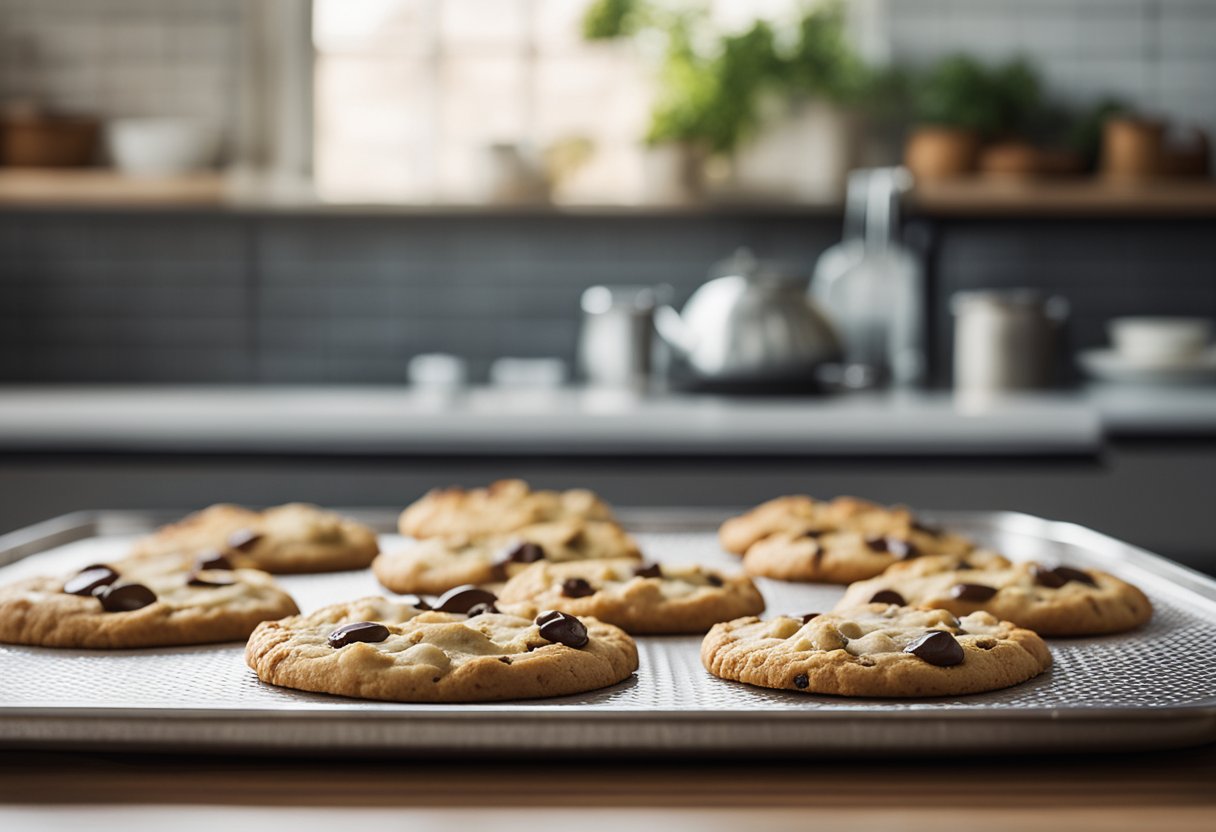
When baking cookies, you might be focused on convenience or the yum factor, but it’s worth considering the health implications and the environment, too. Let’s explore how aluminum foil and parchment paper stack up in terms of safety, eco-friendliness, and disposal options.
Safety and Chemical Composition
Aluminum foil is a thin metal sheet that can withstand high temperatures. It’s generally safe for baking cookies, but when wrapping acidic foods, the acid can react with the foil and cause some aluminum to leach into the food. In contrast, parchment paper is coated with silicone, making it non-stick and resistant to heat and moisture. It doesn’t react with foods or release harmful chemicals when used properly.
- Aluminum Foil: Heat resistant, can react with acidic foods.
- Parchment Paper: Silicone-coated, safe with most foods.
Environmentally Friendly Choices
When it comes to being eco-friendly, parchment paper often seems the better choice as some are compostable and break down over time. However, not all parchment paper is created equal, and the silicone coating can make it less eco-friendly. Still, you’ll find recycled options that are a greener choice. Aluminum foil can be recycled, but it requires cleaning before disposal, which can be water-intensive. Also, mining for aluminum can be environmentally taxing.
- Compostable Options: Parchment paper has compostable varieties.
- Recycling: Both can be recycled; cleanliness is crucial for foil.
Disposal and Recycling Options
Your cleanup process can also influence your environmental impact. Parchment paper typically allows for one-time use, after which it can be composted if uncoated and labeled as such, or thrown away. Aluminum foil can often be reused several times if it’s not too dirty, which reduces waste. When you’re ready to dispose of aluminum foil, fold it and place it in the recycling bin—as long as it’s free from food residue.
- Parchment Paper:
- Single-use, potentially compostable.
- Check if it’s labeled compostable.
- Aluminum Foil:
- Reusable, recyclable if clean.
- Ensure no food remnants before recycling.
Remember, there are alternatives like silicone baking mats that are reusable, making them an eco-friendly option for your kitchen adventures.
Frequently Asked Questions
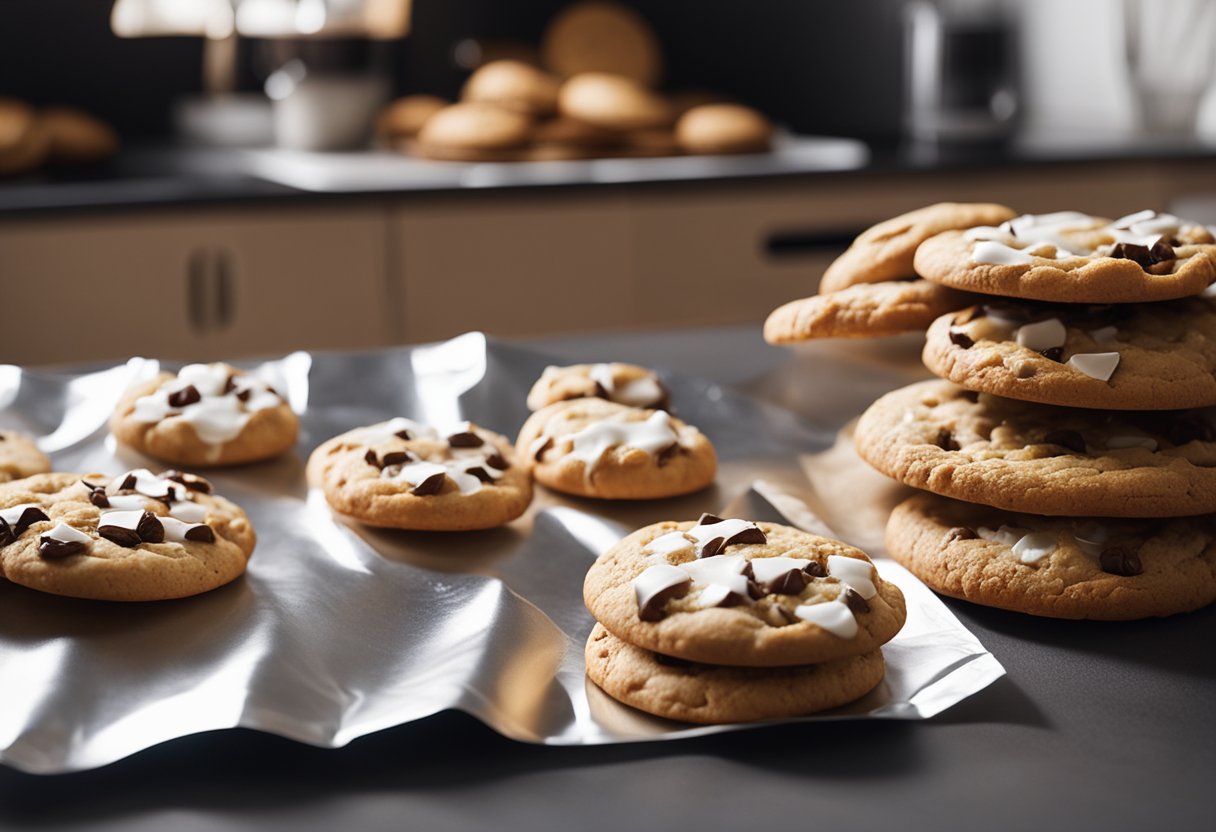
When choosing between aluminum foil and parchment paper for baking cookies, you might have some questions about safety, results, and costs. Here are answers to some common queries.
Can parchment paper catch fire in the oven when baking cookies?
Parchment paper is heat resistant, but it can catch fire if it contacts a direct flame or heat source. It’s safe up to around 420°F-450°F. Always keep it away from the oven’s heating elements.
What are the advantages of using parchment paper over foil for baking cookies?
Parchment paper provides a non-stick surface, which means no additional greasing is needed. Cookies also tend to bake more evenly and slide off easily without sticking. It doesn’t affect the taste or color of your cookies as foil might.
Is there a noticeable difference between using parchment paper and aluminum foil when roasting vegetables?
Yes, parchment creates a slight steaming effect due to its non-porous nature, keeping vegetables moist. Aluminum foil can be crumpled to prevent sticking and tends to produce a crispier outcome due to better heat conductivity.
When using aluminum foil to bake cookies, does the shiny side or dull side make a difference?
The difference is minor. The shiny side reflects some heat, while the dull side absorbs it, potentially making a slight difference in cooking. Either side can be used, but consistency is key for even baking.
How do parchment paper and foil compare in terms of costs for baking?
Parchment paper can be more expensive than foil in the short term, but it’s also reusable for multiple batches in a single baking session, which may equalize or reduce the cost over time.
For baking sugar cookies specifically, is there a benefit to using parchment paper instead of aluminum foil?
Using parchment paper ensures sugar cookies won’t stick to the baking sheet, and it can prevent the bottoms from becoming too dark or overcooked, a common issue when baking on aluminum foil.
